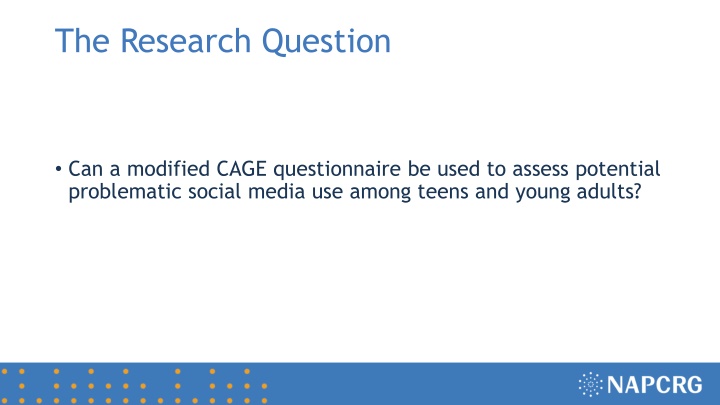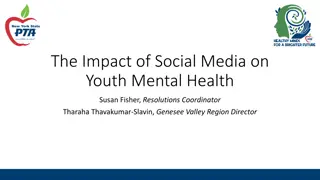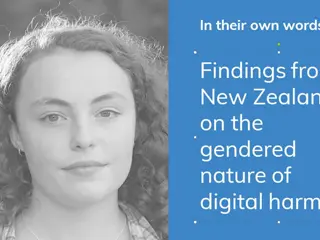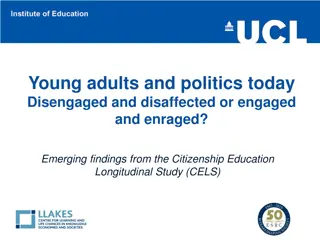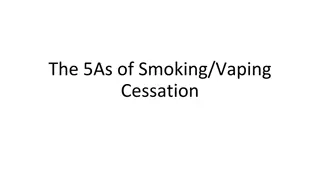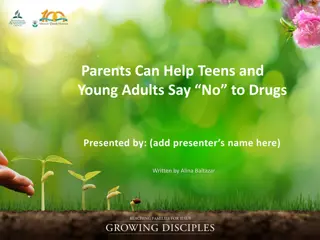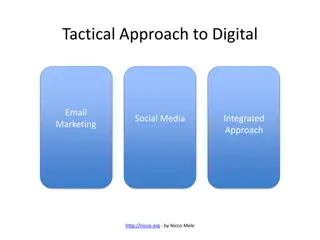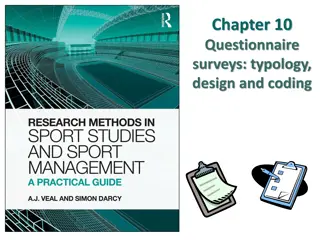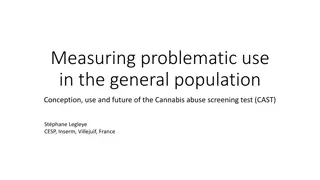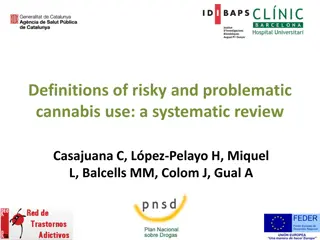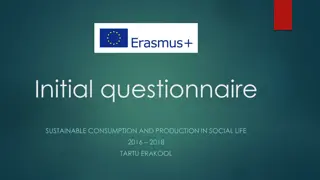Assessing Problematic Social Media Use Among Teens and Young Adults Using a Modified CAGE Questionnaire
MyVoice, a longitudinal mixed methods study, examined the use of a modified CAGE questionnaire to assess potential problematic social media use among youth aged 14-24 in the US. The study found that using a CAGE-style questionnaire could help clinicians initiate conversations beyond just screen time discussions with youth regarding their social media habits. Over 60% of participants showed signs of problematic social media use, yet many reported being able to function well in daily life. The research suggests the utility of this approach in clinical practice for understanding and addressing social media-related concerns among young individuals.
Download Presentation

Please find below an Image/Link to download the presentation.
The content on the website is provided AS IS for your information and personal use only. It may not be sold, licensed, or shared on other websites without obtaining consent from the author.If you encounter any issues during the download, it is possible that the publisher has removed the file from their server.
You are allowed to download the files provided on this website for personal or commercial use, subject to the condition that they are used lawfully. All files are the property of their respective owners.
The content on the website is provided AS IS for your information and personal use only. It may not be sold, licensed, or shared on other websites without obtaining consent from the author.
E N D
Presentation Transcript
The Research Question Can a modified CAGE questionnaire be used to assess potential problematic social media use among teens and young adults?
Research Design and Method MyVoice is an ongoing longitudinal mixed methods study that collects quantitative and qualitative data from youth via text messaging. We recruited youth ages 14-24 from across the US in person and using Facebook and Instagram to match weighted national benchmarks from the 2016 American Community Survey. We asked the national MyVoice cohort 6 open-ended questions (modified social media CAGE questionnaire): List the types of social media (SM) you use: Do you find yourself checking your social media without realizing it? Describe it Have you ever felt like you should CUT BACK on your SM use? Describe it Have people ANNOYED you by commenting on how often you use SM? Tell us about it Have you ever felt GUILTY about your SM use? What happened? Is checking your SM the FIRST THING you do in the morning?
Research Design and Method (contd) Two investigators independently analyzed the qualitative responses using thematic analysis to identify the major themes. Quantitative data was summarized using descriptive statistics.
What the Research Found 572 participants responded to at least one of the questions, while 537 responded to all four CAGE questions. The majority of our participants were white (77%) females (56.5%) with some HS education (94%). Over 60% of respondents answered yes to at least 2/4 of the CAGE questions. If this were a standard CAGE questionnaire, over 60% would screen positive Many youth described themselves as being constantly connected, but they were still able to function well in their daily lives and were not bothered by their social media use. Participants were willing to respond to the CAGE-style questionnaire and provided insightful and nuanced views of their social media use.
What this means for Clinical Practice A CAGE-style questionnaire is a familiar and easy-to-use tool that may be helpful to clinicians to open a dialogue with youth about their social media use that goes beyond screening for screen time.
